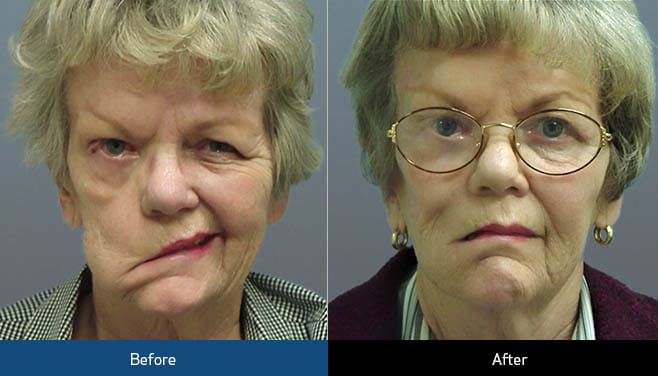Mid-face Lift
Mild yet troublesome asymmetry is not infrequent after recovery from complete facial paralysis or following major reconstructive surgery. The mid-face is prone to developing these imbalances as the force of gravity gradually overcomes the weakened facial muscles producing a downward descent and eventual drooping of the cheek.

Mid-face lift procedures can frequently provide effective correction of the inferiorly displaced cheek and are often performed bilaterally in an effort to maximize facial symmetry. Click here to enlarge photo.
Technique
The mid-face lift procedure is usually approached through an incision that follows the natural crease in front of the ear and extends into the brow along the hair line. A second incision is made inside the mouth. Utilizing these access points the skin, fat and muscles of the cheek are carefully released from the underlying bone.
The entire cheek soft tissue complex is now restored to its native location and the position secured with suspension sutures. In selected cases the procedure is performed though a concealed incision in the lower eye lid.
Recovery
After undergoing a mid-face lift procedure patients are usually kept overnight in the hospital and discharged the following morning. During the period of observation frequent checks are performed to rule out the development of blood collections beneath the skin (hematoma) that might require a return to the operating room.
In an effort to prevent hematoma formation patients are asked avoid drugs with blood thinning effects such as aspirin, ibuprofen, clopidogrel (Plavix) and some herbal preparations for a period of several weeks before surgery.
Other rare complications associated with mid-face lift procedures include damage to the facial nerve, numbness of the cheeks and eyelid retraction. In general mid-face lift procedures are well tolerated and have low complication rates. After undergoing a mid-face lift bruising typically resolves over a three week period but mild to moderate swelling can persist for many months.
real patient case studies
Learn how facial paralysis surgery and functional restoration can help you.
